Rice vinegar is a primary ingredient when preparing sushi rice.
The vinegar comes from fermented rice, a staple in most Asian dishes.
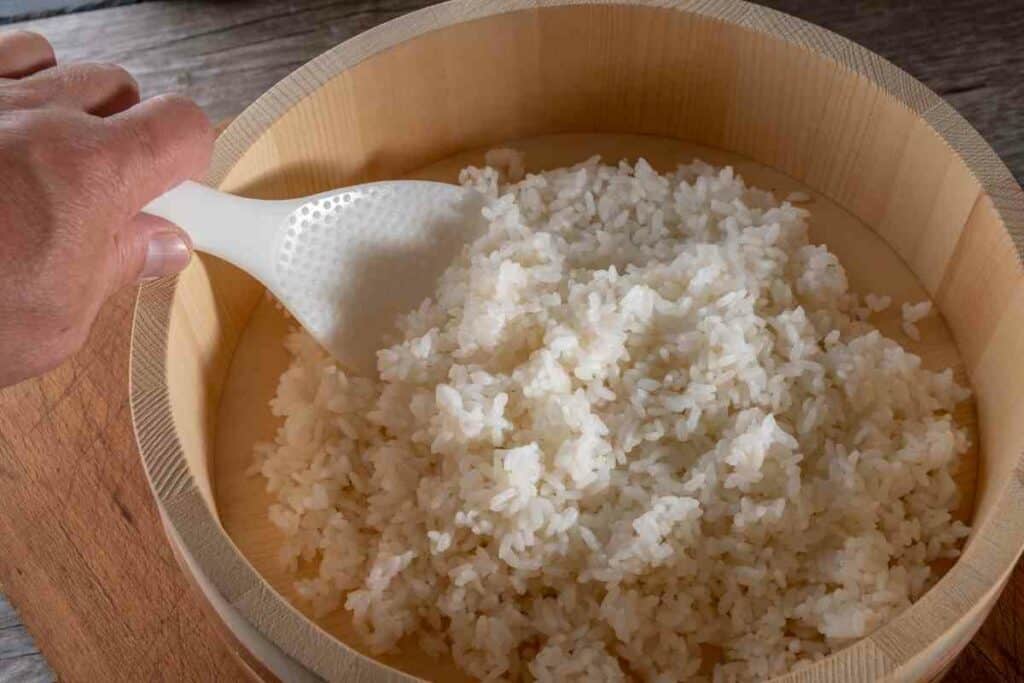
However, if you don’t have it in your pantry you can use other substitutes.
In Particular – You can use white vinegar, apple cider vinegar, and champagne vinegar as alternatives when making sushi rice.
Also, if the above selections are not available, you can still use lemon juice or white wine.
The tastes may differ, but the alternatives can be used effectively to make tasty sushi rice.
Table of Contents
How To Make Sushi Rice Without Rice Vinegar
You can use many alternatives when you do not have rice vinegar.
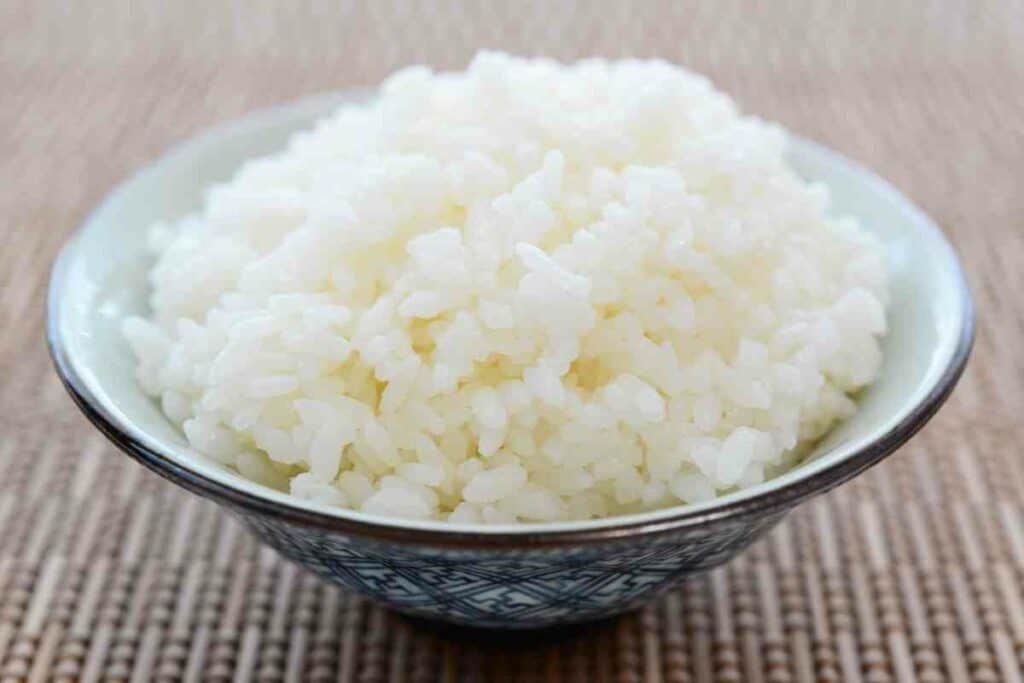
The crucial thing to note is using the proper quantities of the selected alternative. However, the flavor, texture, and aroma may differ from one option to the other.
For Instance – If you use white vinegar, your sushi rice will have almost the same flavor as that rice vinegar. It does not alter the taste of the sushi rice if prepared properly.
On the other hand, apple cider vinegar completely changes the taste of the rice since it has a more pronounced flavor and aroma.
Explore a delightful array of kitchen accessories, Japanese bowls, plates, mugs, and more at our esteemed partners, the Japan Objects Store. Enhance your kitchen with authentic Japanese charm!
Also, lemon juice has an unmistakable flavor, and your rice sushi will have a bold taste.
Using white wine or champagne vinegar makes your rice sweeter.
Characteristics of the alternatives of rice vinegar
| Alternative | Characteristics |
|---|---|
| White wine vinegar | – Offers more acidity than rice vinegar – Less sweet than rice vinegar – Use the same quantity as would when using rice vinegar |
| Apple cider vinegar | – Mild taste with amazing apple flavor – Among the best substitute – Use a similar quantity as would when using rice vinegar |
| Lemon juice | – Introduces a distinctive citrus flavor – Highly acidic – Use two times the quantity you would use if using rice vinegar |
| Champagne vinegar | – Has a mild taste – Can easily replace rice vinegar – Use the same quantity as would when using rice vinegar |
Step-By-Step Guide To Make Sushi Rice Without Rice Vinegar
Below is a breakdown of the process you can use to make your sushi rice without using rice vinegar.
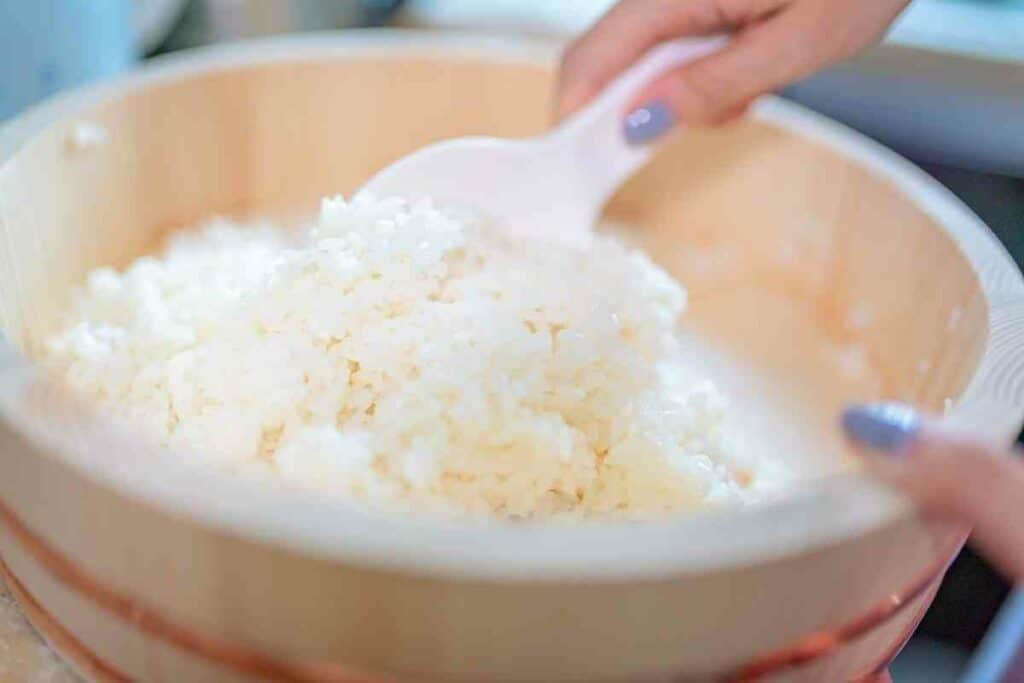
It can also be a step-by-step guide if you are looking for a sushi rice recipe, irrespective of the vinegar you use.
- Firstly, boil vegetable oil, vinegar, and sugar in a cooking pot. While boiling, ensure the three ingredients are blended well. Also, you should stir until all the sugar has dissolved.
- Cook the rice, ensuring that it does not become soggy. When cooked, the rice should be fluffy and soft. You can use an automatic electric rice pot to prepare your rice. The goal is to ensure the rice comes out perfectly cooked for better sushi.
- The third step involves pouring the already prepared vinegar mixture into the rice. Transfer the rice to a big bowl and smoothly pour in your vinegar mixture.
- Use a spatula to fold the rice evenly. Do not smooth or stir the rice. Instead, lift and fold the mixture continuously until the vinegar is evenly spread throughout the rice grains. By the end of the process, the mixture will be slightly dry and sticky.
- When satisfied with the mixture, form layers or sheets with the rice. The thickness of the sheets should be based on your desired size of the rolls. Ensure there are no lumps on your rolls to make it more pleasant.
Therefore, you do not have to use rice vinegar to make high-quality sushi rice; it is a misconception.
However, there are mistakes that you can make along the way when preparing sushi rice.
Some of the common mistakes can prevent you from making perfect sushi rice. The following tips should help you overcome these mistakes.
Booking.comTips For A Perfect Sushi Rice
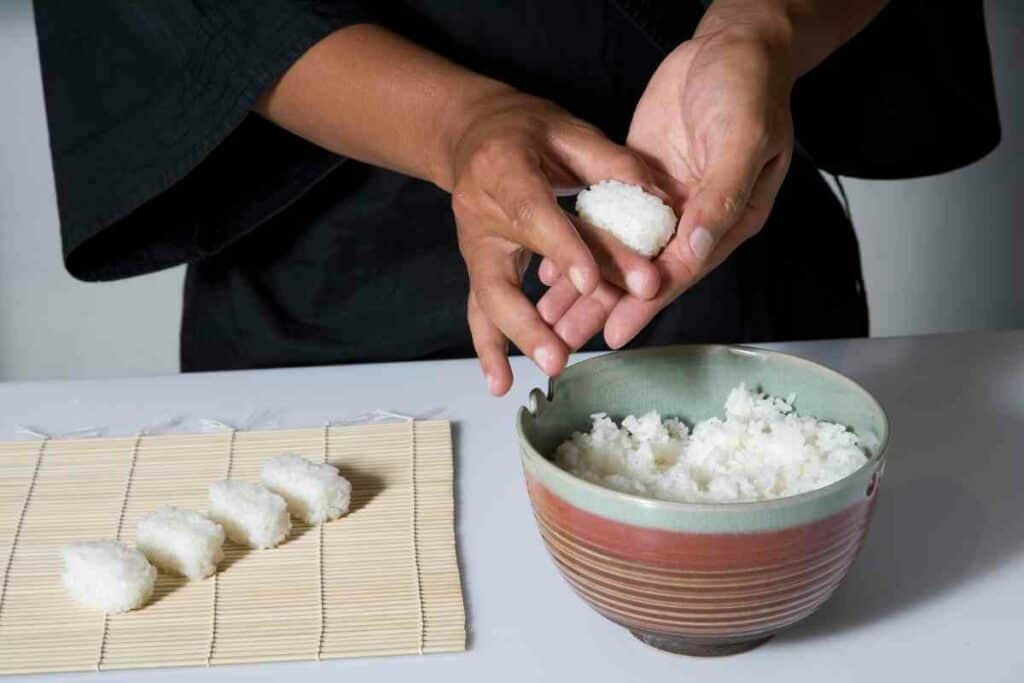
- Take time to plan how you are going to prepare your sushi rice. Remember, you have different ingredients that should not be cooked together. For instance, rice often takes longer to cook compared to the vinegar mixture. Schedule your preparation appropriately, so the rice does not get cold before serving.
- Do not be in a rush to cook everything in the same pot together. While this is possible, the process will mess up the final product.
- Do not guess the measurements of the ingredients to be used. Use the correct amount of vinegar; otherwise, you may spoil your sushi rice. In this case, reading the instruction manual or being guided by a verified recipe will be crucial.
- Mix the rice gently to ensure it does not get mushy. Do not rush. Observe precision and caution to prepare a good batch. Also, improper mixing can result in an imbalance of flavors.
- Only form the sheets when the rice is sticky enough.
Reasons Why Vinegar Is Used For Sushi
Vinegar is an integral part of sushi rice preparation.
Apart from its taste profile, it is crucial in preventing bacteria growth in the rice.
Since the rice goes bad in a few days, vinegar acts as a preservative.
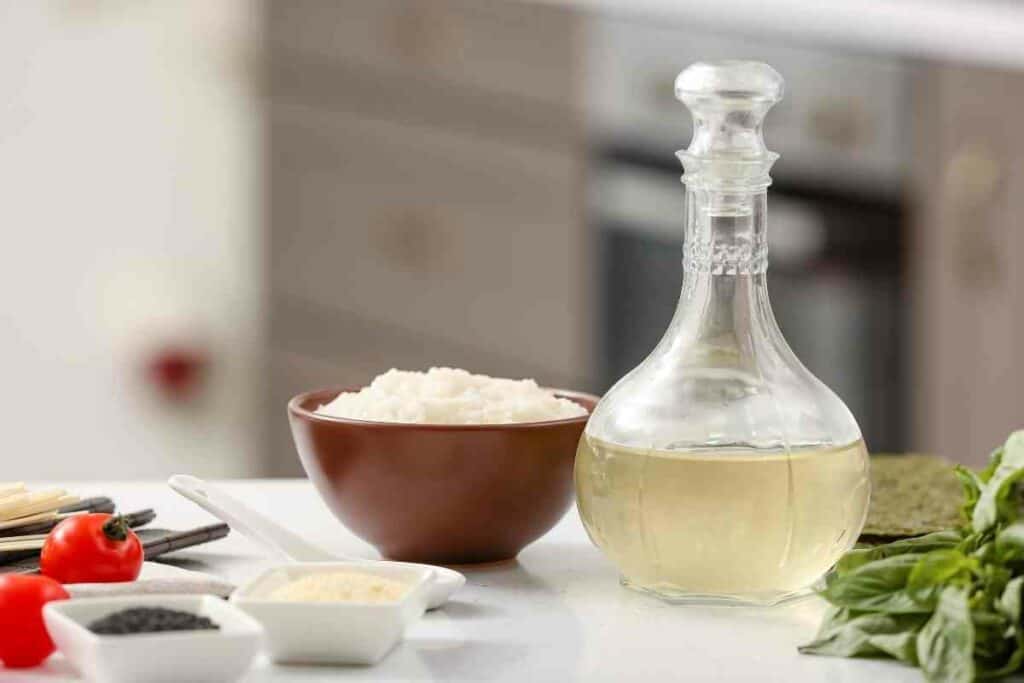
Therefore, using the appropriate vinegar and correct quantities is vital to ensure your rice is free from bacteria growth when stored.
Moreover, vinegar has a unique flavor that does not overpower other flavoring and ingredients used in your sushi.
The vinegar also enhances the stickiness of the rice. The sushi rice may come out flavorless or flat without lemon juice, wine, or vinegar.
Final Words
If you use the correct quantities, you can replace rice vinegar with the substitutes mentioned.
There is no need to postpone your sushi rice preparations because you do not have rice vinegar in your house.
You can use white wine vinegar, champagne vinegar, or lemon juice as an alternative.
- Japanese Traditional Sweets (Wagashi): A Guide to Their Origins and Varieties
- A Taste of Japan in Every Bite – Japanese Candy & Snack Box Review
- Bubble Tea vs Boba Compared: What’s the Difference?
- Best Izakaya Foods for a Relaxed Night Out (My Top 10 Picks)
- Edo Kiriko Whiskey Glasses (Japanese Heritage in Every Pour)
- Japanese Viral Foods on Social Media (Discover the Top 10)









